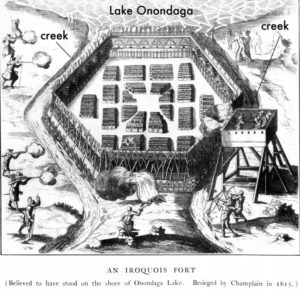
The Onondaga Nation has prepared a Red Paper (a Red Paper is position paper, to offset their “White Papers”) for the National Oceanic and Atmospheric Administration (NOAA). In this document, The Onondaga Nation outlines the historical, cultural and spiritual connection to Lake Ontario.
“This document was requested by NOAA”, said Joe Heath, general counsel for the Onondaga Nation. “NOAA is looking to designate the eastern shore of Lake Ontario as a national marine heritage site.”
Once Lake Ontario is listed as a marine heritage site, NOAA will promote the protection of the area, with its dunes, wetland and multiple rivers, creeks and streams.
 “In dialogue with NOAA, the organization has agreed to state that the Lake is part of the original territory of the Onondaga Nation.”
“In dialogue with NOAA, the organization has agreed to state that the Lake is part of the original territory of the Onondaga Nation.”
The document explains the pre-colonial history of the area. The Onondagas use of the water ways for fishing and travel to Grand Council. It contains the 1684 French drawing of their meeting with Onondaga leaders at the mouth of the Salmon River, in Port Ontario. It also references Onondaga place names to further show the historic use and connection to Lake Ontario.
Finally, the document discusses the environmental uniqueness of the eastern shore. The eastern shore of Lake Ontario is home to extensive sand dunes with fens and wetlands. Also, many tributaries flow off the Tug Hill Plateau into the Lake connecting the entire area.
“This will provide NOAA and others who read it, a clear connection of the Onondaga and the Haudenosaunee to Lake Ontario,” said Heath. “It is an important history to know as well as being aware to protect this important resource.”
Please click to read the Document- The Onondaga Nation’s and the Haudenosaunee’s Historical Connection to Lake
